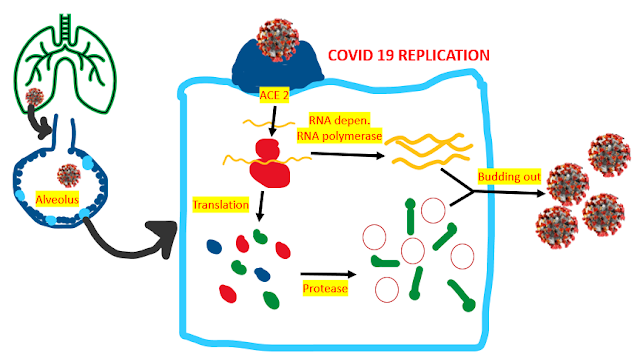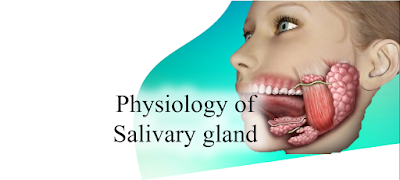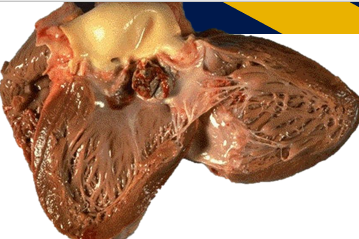Pathophysiology of COVID 19
Introduction: 

COVID 19 is a viral respiratory disease that is able to cause systemic inflammatory response syndrome from the lungs. This virus was originated from China and it can spread through cough and fecal matter from an infected person. In this blog, I explain the clear pathophysiology of this disease.
Basically, COVID 19 is caused by Coronavirus. Microbiologically it is a positive single-strand RNA virus (+ ss RNA). It is a complex virus which means it has a capsid inside the envelope. As the name indicates, Coronavirus have spikes in the envelope. It is the largest RNA virus in which the genome is approximately 30 kb.
Coronavirus have nucleoprotein (capsid) around the RNA which is called N protein. The lipid bilayer membrane is covered as an envelope (E protein). The envelope has glycoprotein spikes on them called S protein.
Etiology (Causes):
COVID 19 is spread mostly through airborne and from fecal matter. It is believed that at first, it was zoonotic infection among bats. Later it became mutated to pangolin and humans. Normally, It is estimated that a single person can spread this virus to approximately 3 persons.
Viral replication in our body:
At first, this virus will get enter to lungs and reach the level of alveoli. In an alveolus, it gonna affect the pneumocyte type 1 and type 2 cells mainly the type 2 cells. As we already know the functions of these cells, type 1 cells help in the air exchange, and type 2 cells help in the synthesis of surfactants which helps the alveoli to maintain its structure.
The virus will attach to the angiotensin-converting enzyme-2 (ACE - 2) on the type 2 cell, with the help of its Spike protein (S protein). It injects its own +ssRNA into the cell's cytosol. Then its get translated to produce viral proteins. Simultaneously, the RNA undergoes replication. Then with the help of protease enzyme, the viral proteins in the cytosol will form viral parts like N protein, S protein.
And now the replicated RNA and the synthesized viral proteins will combine and will bud off from the cell as a whole virus.
Pathophysiological process:
This replication in the cytosol will cause the cell to inflammation. Thus the inflammatory mediators cause the activation of macrophage which begins to release cytokines like IL1, IL6, and TNF alpha. These cytokines get to enter the blood vessels and cause vasodilation and increase permeability.
This permeability will cause the plasma to leak out of the vessels near the alveolus and thus cause alveolar edema. This edematous fluid will increase the surface tension and because of impaired type 2 pneumocyte cell, the alveolus gonna collapse. The gas exchange won't be normal which causes hypoxia and the person's trouble to breathe (dyspnea).
Simultaneously, the inflammation of the pneumocyte type 2 cells triggers the release of neutrophils in a large amount and it begins to release protease and gonna affect the type 1 cells also.
Now in the alveolus contain, macrophage, neutrophils, the debris of damaged pneumocyte cell, and fluids cause consolidation of the particular area of the lungs.
This consolidation with fluid will trigger cough with sputum.
Systemic effects:
The synthesized cytokines reach the brain (hypothalamus) which is responsible for temperature regulation. This will cause a fever.
In this condition, PO2 in our blood will decrease which stimulates the chemoreceptor. The chemoreceptors will increase the sympathetic nervous system and increase the heart rate (HR). This increases the respiratory rate automatically.
The increased permeability of systemic blood vessels cause more leakage of fluid and cause a septic shock by causing systemic inflammatory response syndrome.
More fluid leakage cause decreased blood volume and decreased peripheral resistance and causes decreased blood pressure (hypotension). This will cause multiple system organ failures.







Comments
Post a Comment